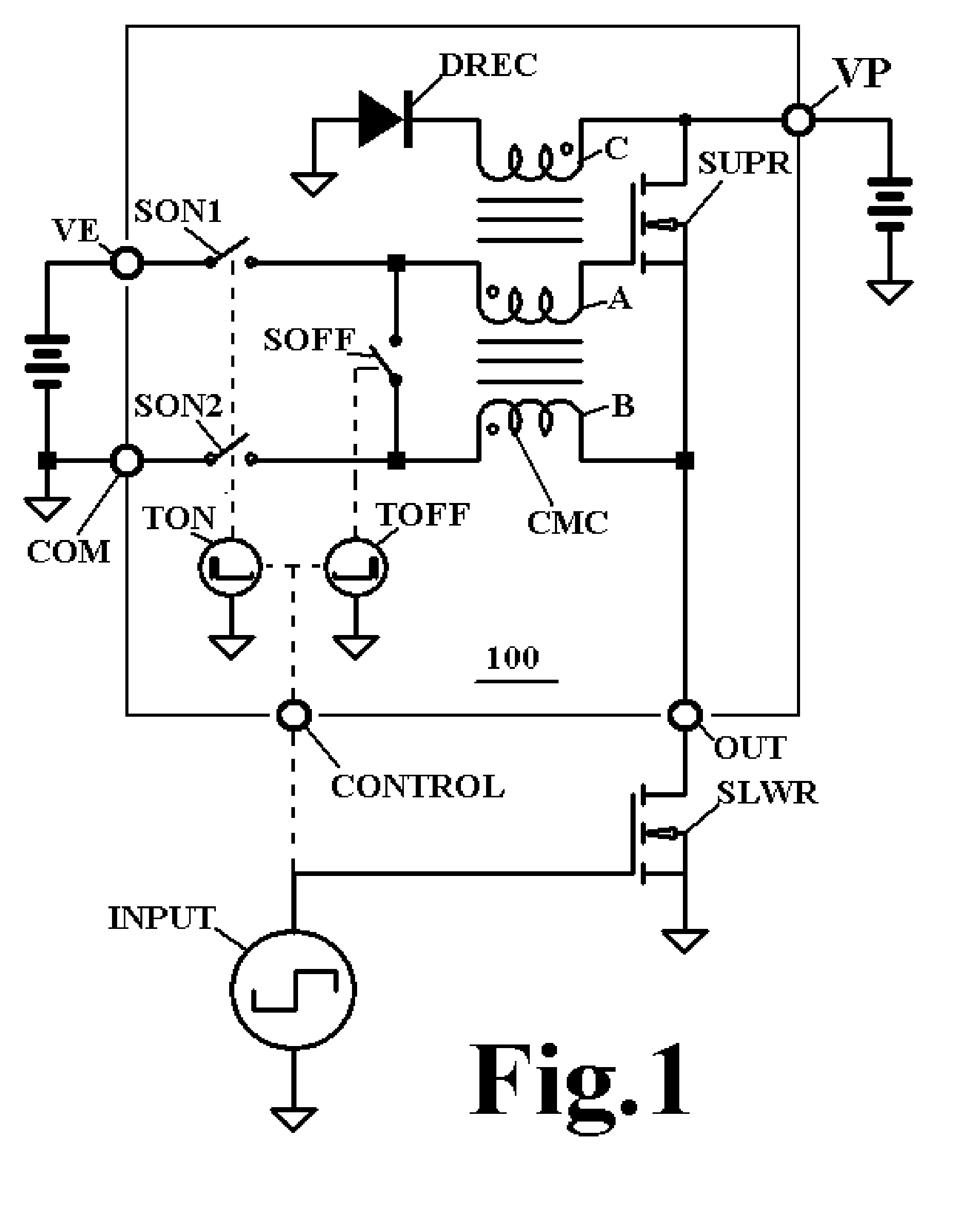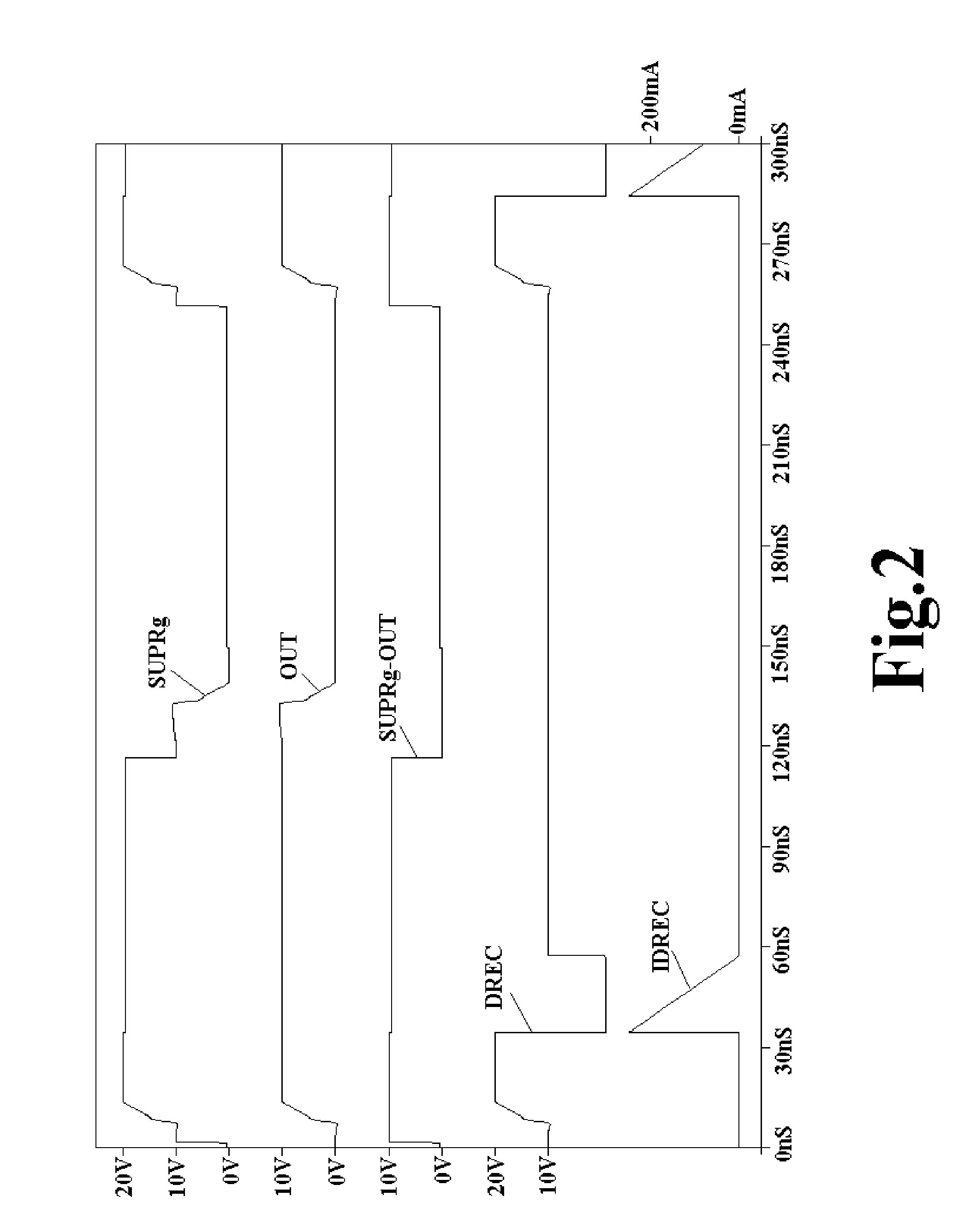Switch with common-mode choke
- Summary
- Abstract
- Description
- Claims
- Application Information
AI Technical Summary
Benefits of technology
Problems solved by technology
Method used
Image
Examples
Embodiment Construction
[0012]Referring to first FIG. 1, there is depicted a switch 100 according to the present invention, shown embedded in a typical totem pole circuit according to the prior art. A power voltage source is shown applied through a terminal VP. A switch enhancement voltage source is shown applied through a terminal VE. A control signal is shown applied through a terminal CONTROL. A totem pole output is shown connected through a terminal OUT. A common return is shown connected through a terminal COM. Inside switch 100 is shown a high-side FET switch SUPR. Outside switch 100 is shown low-side FET switch SLWR. Connected through terminal OUT these two FET's form a well-known totem pole circuit. A control signal from a generator INPUT both controls FET SLWR and enters switch 100 through terminal CONTROL. For the polarity switches used in this figure, SLWR is on when the signal at terminal CONTROL is positive, and off when it is negative.
[0013]Inside switch 100, the falling edge of the signal at...
PUM
 Login to View More
Login to View More Abstract
Description
Claims
Application Information
 Login to View More
Login to View More - Generate Ideas
- Intellectual Property
- Life Sciences
- Materials
- Tech Scout
- Unparalleled Data Quality
- Higher Quality Content
- 60% Fewer Hallucinations
Browse by: Latest US Patents, China's latest patents, Technical Efficacy Thesaurus, Application Domain, Technology Topic, Popular Technical Reports.
© 2025 PatSnap. All rights reserved.Legal|Privacy policy|Modern Slavery Act Transparency Statement|Sitemap|About US| Contact US: help@patsnap.com



